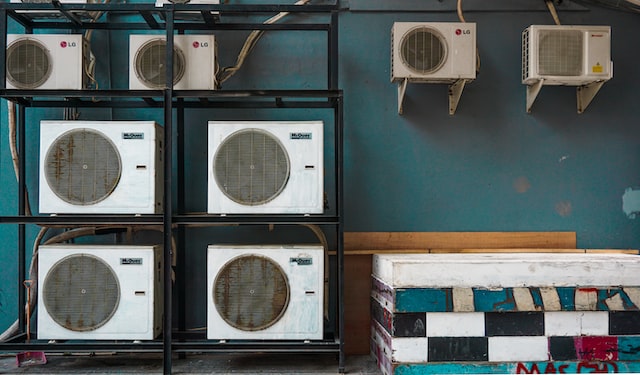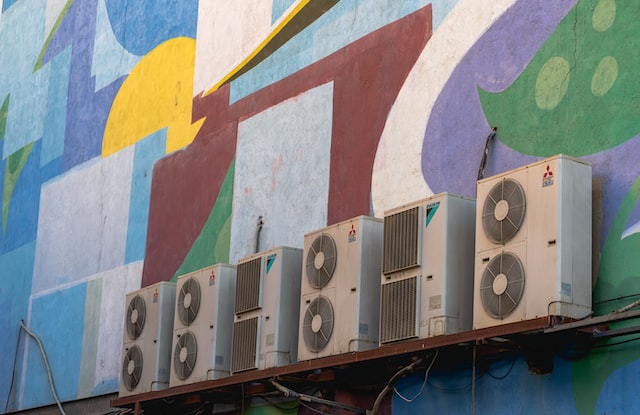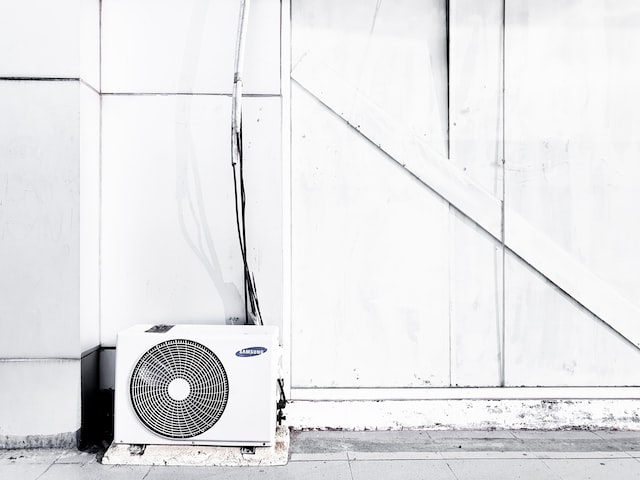When shopping for an air conditioner, there are several different models provided by air conditioning contractors to take into consideration. Each has its own advantages and drawbacks so it’s essential that you know what you require before making a decision.

Air conditioners can be divided into two categories: stand-alone units and split systems. Window, floor, and ducted options are all available.
Window
Window air conditioners work by moving hot, humid air from your home through an indoor unit and exhausting it outdoors. The cooled, cool air is then pumped back into the room, helping to reduce temperature and humidity levels.
Window AC models typically feature two sets of coils–an evaporator coil in the front, facing inside, and a condenser coil at the back, facing outside. These coils are covered with thin aluminium fins which trap and release heat more efficiently than bare steel does.
It also utilises a compressor to move the refrigerant between these two sets of coils, known as the “hot air cycle.”
Window air conditioning models can be permanently installed inside standard vertical sash windows or a measured and prepared wall opening. Air conditioner contractors can provide an affordable and convenient cooling solution for rooms or apartments without access to central HVAC systems.
They offer great comfort and can reduce energy bills during the summer. But before making a choice, there are a few things to take into account.
Before selecting the ideal unit for your space, you must determine its square footage and required cooling power. Window air conditioners measure cooling capacity in BTUs (thermostat units).
For rooms (150 square feet or smaller), opt for a unit with at least 5,000 BTUs. For slightly larger areas or apartments, look for one with at least 8,000 BTUs.
Window ACs come in a range of sizes and double- and single-hung configurations. Most have mounting kits that can be easily installed by most homeowners using the manufacturer’s instructions.
Wall
Wall ACs are a popular option for homeowners who need to cool one or two rooms without running ductwork throughout their residences. These units boast several advantages, such as energy efficiency and the capacity to double as heating systems in winter months.

In general, through-the-wall ACs are more powerful than window models and can be installed flush with the wall for a sleek appearance. Furthermore, they’re more permanent in design compared to window units, making them a better investment for people planning on staying in their current home for years to come.
These ACs require a supportive wall sleeve to securely mount them, which can either come with the unit or be purchased separately. Make sure the sleeve’s thickness and fit is correct before beginning installation.
When selecting an air conditioning system, the key to ensure its efficiency is precisely sizing it correctly. This calculation takes into account both BTUs (the amount of cooling power necessary to maintain a given temperature) and the total square footage being cooled.
As a general guideline, aim for 20 BTUs per square foot of space being cooled. So if you need to cool 400 square feet, an AC with at least 14,000 BTUs will do the trick.
To guarantee you get the most energy-efficient through-the-wall AC, look for an Energy Star-rated model. These units tend to be 10 per cent more efficient than standard models and can save you hundreds in energy costs over time.
Floor
Floor air conditioners work similarly to split systems, but are installed directly onto the ground instead of on a wall. This makes them an ideal choice for homes with high ceilings or rooms where wall space is limited.
They feature the same components found in a split system, such as a compressor, filtration unit, refrigerant and turbofan for cooling and heating. Some models even feature auto-swing louvres to ensure even distribution of cold air throughout the room.
Installing a floor air conditioning system has several advantages, but it is essential to take into account your individual requirements before making the decision. Some of the primary advantages include:
Powerful Cooling – Floor standing ACs offer more cooling capacity than their window AC counterparts, sitting lower to the ground and capable of cooling large spaces from 10m2 up to 65m2.
Easy Accessibility – Floor mounted air conditioners have better air circulation than other mounting options, as they sit higher in the room and blow directly at whoever is sitting down.
Low Profile Design – Floor mounted air conditioners boast a slim and modern appearance, making them more eye-catching than their wall mounted counterparts.
Floor mounted ACs tend to be more affordable than other cooling systems due to their smaller size and energy-saving design, making them a great option for those on a budget.
These units are perfect for homeowners on a budget, as they don’t require ductwork or extensive site preparation.
When shopping for a cooling system, consult an experienced professional who can suggest the most suitable choice based on your requirements and budget. They’ll explain all types of air conditioning systems – including floor ACs – and assist in deciding which one is ideal for your home.
Ducted
Ducted air conditioning systems distribute cool air throughout your home through a series of ducts. Ductless air conditioners, on the other hand, don’t rely on ductwork but instead use a conduit containing refrigerant and power cables to connect outdoor compressors, condensers, and indoor handler units.
When deciding if a ductless system is ideal for your home, there are several elements to take into account. The first is how large the room you wish to cool.
Selecting the proper equipment to put out the correct amount of BTUs for cooling your space efficiently. Additionally, consider which size and type of ductwork works best for both your home and budget.
When selecting your ductless AC system, the installation method you select matters. These units can be mounted in various ways: wall-mounted, ceiling suspended and floor-mounted.
If you’re short on wall space, ceiling-mounted mini splits can be an ideal solution. These systems work best for those with large rooms and open floor plans since they send air in multiple directions simultaneously.
Ducted air conditioning systems tend to be more costly, as they don’t need the installation of ductwork to distribute cool air. Furthermore, ductless systems are much more energy-efficient than traditional AC units and don’t generate smoke, bacteria or odours in your home – making them eco-friendly options that won’t add humidity which could promote mold growth. They’re an ideal option for homes with older or unfinished basements that lack ductwork.
Split
Split air conditioners are a type of air conditioning system with an indoor unit and an outdoor unit. The indoor unit is installed high up on the wall, while the outdoor unit attaches to either the ceiling or floor of the room you wish to cool.
The indoor unit contains the cooling coil, long blower and air filter; on the other hand, the outdoor unit houses the compressor, condenser coil and expansion or capillary tubing.
This type of air conditioning system is ideal for homes without ductwork or those who want the flexibility of heating or cooling specific rooms without using a whole-house system. They also provide minimal impact to your health and well-being and are energy efficient, earning them the ENERGY STAR label – making them an ENERGY STAR choice!
These systems operate by pumping refrigerant gas through the cooling circuit of a system. The gas is heated by the compressor and then cooled again by the condenser, changing it back into liquid before returning it to gas again.
Once the gas has been cooled, it is passed through an evaporator to cool the air. This cycle repeats multiple times throughout the system’s cooling cycle.
Another air conditioning type is the packaged AC, which contains all components related to refrigeration in one package. Usually, this model has a capacity between one and three tons.
These systems are more cost-effective than mini-split systems and can be moved from room to room. However, they may not be as quiet when running and won’t have the capacity to heat or cool multiple areas of a home. Furthermore, these units don’t perform well in extremely cold or hot temperatures.

